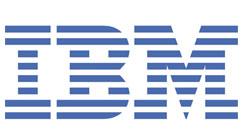 Harvard’s Clean Energy Project (CEP) is using IBM’s World Community Grid, a “virtual supercomputer” that leverages volunteers’ surplus computing power, to determine which organic carbon compounds are best suited for converting sunlight into electricity. IBM claims that the resulting database of compounds is the “most extensive investigation of quantum chemicals ever performed.” In theory, all that information can be utilized to develop organic semiconductors and solar cells. Roughly a thousand of the molecular structures explored by the project are capable of converting 11 percent (or more) of captured sunlight into electricity—a significant boost from many organic cells currently in use, which convert between 4 and 5 percent of sunlight. That’s significantly less than solar cells crafted from silicon, which can produce efficiencies of up to nearly 20 percent (at least in the case of black silicon solar cells). But silicon solar cells are costly to produce, experiments with low-grade materials notwithstanding; organic cells could be a cheap and recyclable alternative, provided researchers can make them more efficient. The World Community Grid asks volunteers to download a small program (called an “agent”) onto their PC. Whenever the machine is idle, it requests data from whatever project is on the World Community Grid’s server, which it crunches before sending back (and requesting another data packet). Several notable projects have embraced grid computing as a way to analyze massive datasets, including SETI@Home. IBM claims the World Community Grid provided Harvard’s Clean Energy Project with the equivalent of a single PC performing 17,000 years’ worth of calculations. "We are glad to be releasing the data computed by the volunteers from IBM's World Community Grid to the public,” Alán Aspuru-Guzik, Professor of Chemistry at Harvard University and leader of the Clean Energy Project, wrote in a statement. “Our first analysis of the data has been submitted for publication, but now with all the data readily available online in MolecularSpace.org, many others around the world can further analyze it to accelerate discovery." Harvard’s Clean Energy Project isn’t the only data-driven, solar-related endeavor in the works. Earlier this year, the U.S. Department of Energy announced that it would invest $9 million in seven “data-driven” projects for improving solar-energy technology in the United States. The investment is part of the department’s broader SunShot Initiative, billed as a “collaborative national effort” to make solar energy a cost-competitive form of power by the end of the decade. The seven projects include an effort by the National Renewable Energy Laboratory, in conjunction with Clean Power Finance, to develop a model capable of collecting and analyzing data from more than 1,300 solar installation companies, and using that data to build optimal community- and regional-scale financing structures. Google, Hewlett-Packard, Facebook, and Intel are just a few of the tech companies, meanwhile, working to make their respective infrastructures more “green” and energy efficient. Image: surawach5/Shutterstock.com
Harvard’s Clean Energy Project (CEP) is using IBM’s World Community Grid, a “virtual supercomputer” that leverages volunteers’ surplus computing power, to determine which organic carbon compounds are best suited for converting sunlight into electricity. IBM claims that the resulting database of compounds is the “most extensive investigation of quantum chemicals ever performed.” In theory, all that information can be utilized to develop organic semiconductors and solar cells. Roughly a thousand of the molecular structures explored by the project are capable of converting 11 percent (or more) of captured sunlight into electricity—a significant boost from many organic cells currently in use, which convert between 4 and 5 percent of sunlight. That’s significantly less than solar cells crafted from silicon, which can produce efficiencies of up to nearly 20 percent (at least in the case of black silicon solar cells). But silicon solar cells are costly to produce, experiments with low-grade materials notwithstanding; organic cells could be a cheap and recyclable alternative, provided researchers can make them more efficient. The World Community Grid asks volunteers to download a small program (called an “agent”) onto their PC. Whenever the machine is idle, it requests data from whatever project is on the World Community Grid’s server, which it crunches before sending back (and requesting another data packet). Several notable projects have embraced grid computing as a way to analyze massive datasets, including SETI@Home. IBM claims the World Community Grid provided Harvard’s Clean Energy Project with the equivalent of a single PC performing 17,000 years’ worth of calculations. "We are glad to be releasing the data computed by the volunteers from IBM's World Community Grid to the public,” Alán Aspuru-Guzik, Professor of Chemistry at Harvard University and leader of the Clean Energy Project, wrote in a statement. “Our first analysis of the data has been submitted for publication, but now with all the data readily available online in MolecularSpace.org, many others around the world can further analyze it to accelerate discovery." Harvard’s Clean Energy Project isn’t the only data-driven, solar-related endeavor in the works. Earlier this year, the U.S. Department of Energy announced that it would invest $9 million in seven “data-driven” projects for improving solar-energy technology in the United States. The investment is part of the department’s broader SunShot Initiative, billed as a “collaborative national effort” to make solar energy a cost-competitive form of power by the end of the decade. The seven projects include an effort by the National Renewable Energy Laboratory, in conjunction with Clean Power Finance, to develop a model capable of collecting and analyzing data from more than 1,300 solar installation companies, and using that data to build optimal community- and regional-scale financing structures. Google, Hewlett-Packard, Facebook, and Intel are just a few of the tech companies, meanwhile, working to make their respective infrastructures more “green” and energy efficient. Image: surawach5/Shutterstock.com Harvard, IBM Crunch Data for More Efficient Solar Cells
 Harvard’s Clean Energy Project (CEP) is using IBM’s World Community Grid, a “virtual supercomputer” that leverages volunteers’ surplus computing power, to determine which organic carbon compounds are best suited for converting sunlight into electricity. IBM claims that the resulting database of compounds is the “most extensive investigation of quantum chemicals ever performed.” In theory, all that information can be utilized to develop organic semiconductors and solar cells. Roughly a thousand of the molecular structures explored by the project are capable of converting 11 percent (or more) of captured sunlight into electricity—a significant boost from many organic cells currently in use, which convert between 4 and 5 percent of sunlight. That’s significantly less than solar cells crafted from silicon, which can produce efficiencies of up to nearly 20 percent (at least in the case of black silicon solar cells). But silicon solar cells are costly to produce, experiments with low-grade materials notwithstanding; organic cells could be a cheap and recyclable alternative, provided researchers can make them more efficient. The World Community Grid asks volunteers to download a small program (called an “agent”) onto their PC. Whenever the machine is idle, it requests data from whatever project is on the World Community Grid’s server, which it crunches before sending back (and requesting another data packet). Several notable projects have embraced grid computing as a way to analyze massive datasets, including SETI@Home. IBM claims the World Community Grid provided Harvard’s Clean Energy Project with the equivalent of a single PC performing 17,000 years’ worth of calculations. "We are glad to be releasing the data computed by the volunteers from IBM's World Community Grid to the public,” Alán Aspuru-Guzik, Professor of Chemistry at Harvard University and leader of the Clean Energy Project, wrote in a statement. “Our first analysis of the data has been submitted for publication, but now with all the data readily available online in MolecularSpace.org, many others around the world can further analyze it to accelerate discovery." Harvard’s Clean Energy Project isn’t the only data-driven, solar-related endeavor in the works. Earlier this year, the U.S. Department of Energy announced that it would invest $9 million in seven “data-driven” projects for improving solar-energy technology in the United States. The investment is part of the department’s broader SunShot Initiative, billed as a “collaborative national effort” to make solar energy a cost-competitive form of power by the end of the decade. The seven projects include an effort by the National Renewable Energy Laboratory, in conjunction with Clean Power Finance, to develop a model capable of collecting and analyzing data from more than 1,300 solar installation companies, and using that data to build optimal community- and regional-scale financing structures. Google, Hewlett-Packard, Facebook, and Intel are just a few of the tech companies, meanwhile, working to make their respective infrastructures more “green” and energy efficient. Image: surawach5/Shutterstock.com
Harvard’s Clean Energy Project (CEP) is using IBM’s World Community Grid, a “virtual supercomputer” that leverages volunteers’ surplus computing power, to determine which organic carbon compounds are best suited for converting sunlight into electricity. IBM claims that the resulting database of compounds is the “most extensive investigation of quantum chemicals ever performed.” In theory, all that information can be utilized to develop organic semiconductors and solar cells. Roughly a thousand of the molecular structures explored by the project are capable of converting 11 percent (or more) of captured sunlight into electricity—a significant boost from many organic cells currently in use, which convert between 4 and 5 percent of sunlight. That’s significantly less than solar cells crafted from silicon, which can produce efficiencies of up to nearly 20 percent (at least in the case of black silicon solar cells). But silicon solar cells are costly to produce, experiments with low-grade materials notwithstanding; organic cells could be a cheap and recyclable alternative, provided researchers can make them more efficient. The World Community Grid asks volunteers to download a small program (called an “agent”) onto their PC. Whenever the machine is idle, it requests data from whatever project is on the World Community Grid’s server, which it crunches before sending back (and requesting another data packet). Several notable projects have embraced grid computing as a way to analyze massive datasets, including SETI@Home. IBM claims the World Community Grid provided Harvard’s Clean Energy Project with the equivalent of a single PC performing 17,000 years’ worth of calculations. "We are glad to be releasing the data computed by the volunteers from IBM's World Community Grid to the public,” Alán Aspuru-Guzik, Professor of Chemistry at Harvard University and leader of the Clean Energy Project, wrote in a statement. “Our first analysis of the data has been submitted for publication, but now with all the data readily available online in MolecularSpace.org, many others around the world can further analyze it to accelerate discovery." Harvard’s Clean Energy Project isn’t the only data-driven, solar-related endeavor in the works. Earlier this year, the U.S. Department of Energy announced that it would invest $9 million in seven “data-driven” projects for improving solar-energy technology in the United States. The investment is part of the department’s broader SunShot Initiative, billed as a “collaborative national effort” to make solar energy a cost-competitive form of power by the end of the decade. The seven projects include an effort by the National Renewable Energy Laboratory, in conjunction with Clean Power Finance, to develop a model capable of collecting and analyzing data from more than 1,300 solar installation companies, and using that data to build optimal community- and regional-scale financing structures. Google, Hewlett-Packard, Facebook, and Intel are just a few of the tech companies, meanwhile, working to make their respective infrastructures more “green” and energy efficient. Image: surawach5/Shutterstock.com 
